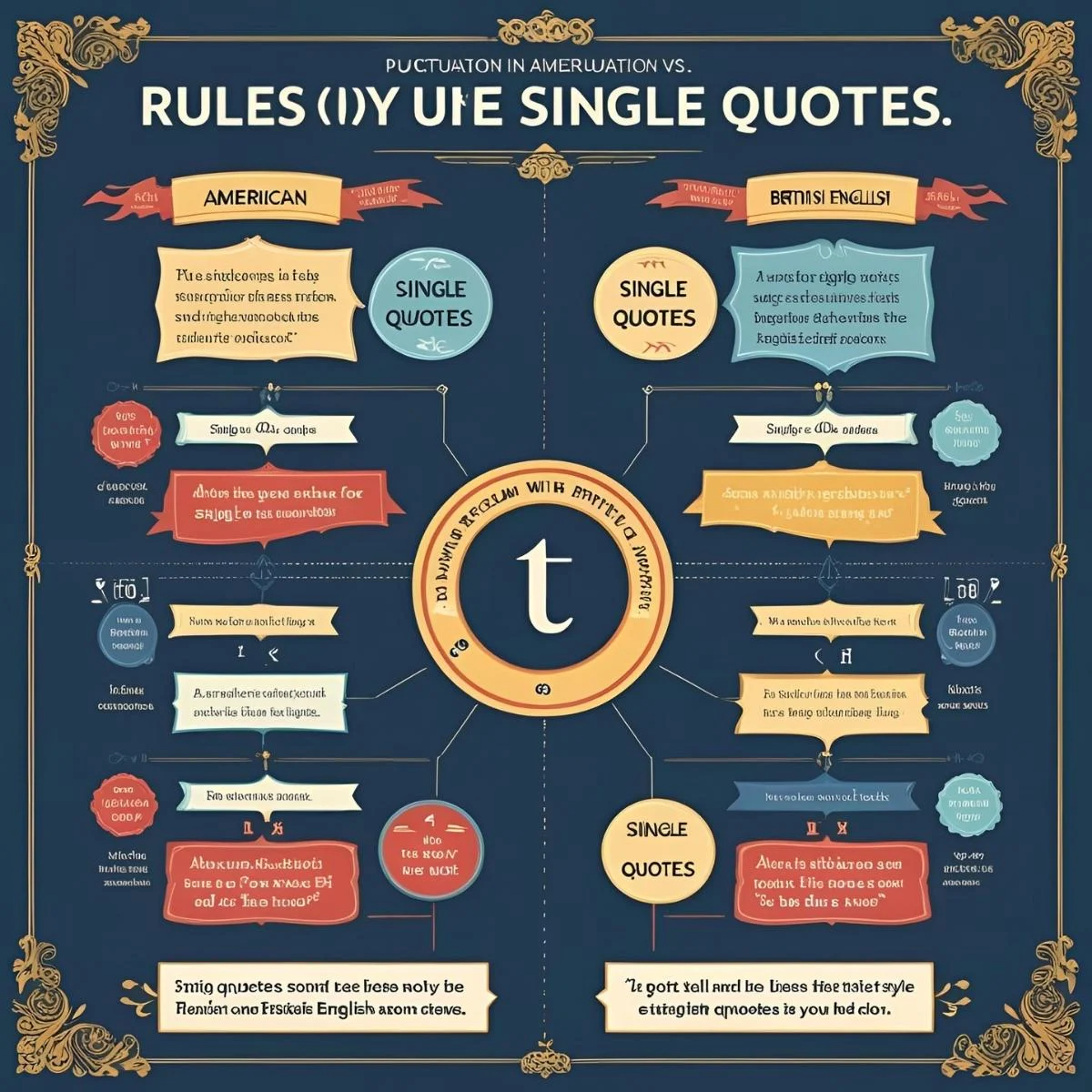Quotation marks are an essential part of writing. While double quotes (“”) are more commonly used, single quotes (‘’) have their place — and using them correctly can make your writing more professional and grammatically sound.
If you’ve ever wondered when to use single quotes in your writing, this article will clear up the confusion.
In this guide, we’ll walk through the various situations where single quotation marks are appropriate, provide examples, compare UK and US usage, and answer the most common questions related to this punctuation.
What Are Single Quotes?
Single quotation marks are punctuation marks that look like this: ‘ ’. They are often used inside double quotation marks to indicate a quote within a quote. However, that’s not their only purpose.
Example:
“Did she really say, ‘I’ll never forgive you’?” he asked.
Here, the speaker is quoting someone else’s words within their own dialogue.
Difference Between Single and Double Quotes
The key difference lies in their use and regional preferences:
| Feature | Single Quotes (‘ ’) | Double Quotes (“ ”) |
|---|---|---|
| Primary Use (US) | Quote within a quote | Standard quotations |
| Primary Use (UK) | Standard quotations | Quote within a quote |
| Typography | Often used for stylized or internal terms | Preferred for clarity and dialogue |
In American English, double quotes are typically used first, with single quotes nested inside. In British English, it’s often the reverse.
When to Use Single Quotes in American English
1. Quoting Within a Quote
The most common use is when you’re quoting someone who is already quoting someone else.
Example:
“I heard her say, ‘This is not over,’ and then she left.”
2. Headlines or Article Titles in Headlines (Style Guides)
Some style guides (like The Economist) use single quotes for article titles.
Example:
Read our latest review: ‘The Rise of AI in Everyday Life’
3. Highlighting Slang, Irony, or Unusual Terms (Occasionally)
While italics are generally preferred, single quotes may be used to draw attention to terms or phrases used in an ironic, sarcastic, or unusual way.
Example:
His so-called ‘solution’ only made things worse.
When to Use Single Quotes in British English
In British English, single quotation marks often serve as the default quotation tool, with double quotes used inside them.
Example:
‘Did he really say “I’m not going” to your face?’ she asked.
This stylistic reversal can confuse readers accustomed to American conventions, but it is widely accepted in UK publishing.
Other Situations to Use Single Quotes
1. In Headlines (Journalistic Style)
Journalistic and tabloid styles sometimes use single quotes in place of double quotes in headlines to save space or for stylistic effect.
Example:
Prime Minister denies ‘cover-up’ claims
2. Academic Writing (Under Specific Guidelines)
Certain academic style guides — especially in humanities — prefer single quotes for short phrases, linguistic terms, or specific word references.
Example:
The term ‘hegemony’ is often misunderstood in political discourse.
3. Linguistic and Lexical Examples
When you’re discussing words themselves as words (metalanguage), single quotes may help distinguish them.
Example:
The word ‘run’ has multiple meanings in English.
Common Mistakes to Avoid
❌ Mixing up single and double quotes without consistency
Always follow the style guide you are using — whether it’s APA, MLA, Chicago, or your house style.
❌ Using single quotes for emphasis
Never use quotation marks (single or double) to emphasize a word. That’s what italics or bold are for.
Incorrect:
She was ‘very’ tired.
Correct:
She was very tired.
Single Quotes in Programming and Technology
In many programming languages, single and double quotes have different uses.
- In Python,
'string'and"string"are often interchangeable. - In JavaScript, single quotes can define strings, but nesting matters: javascriptCopyEdit
const phrase = 'He said "hello" and walked away.'; - In SQL, single quotes are used to wrap string values: sqlCopyEdit
SELECT * FROM users WHERE name = 'John';
While not the same as grammar rules, it’s good to understand these differences if you work with code.
Style Guides and Their Preferences
| Style Guide | Primary Quote | Secondary (Nested) |
|---|---|---|
| APA (US) | Double | Single |
| MLA (US) | Double | Single |
| Chicago (US) | Double | Single |
| Oxford/Guardian (UK) | Single | Double |
| BBC (UK) | Single | Double |
Always follow the preferred style for your writing purpose — academic, journalistic, or creative.
Frequently Asked Questions (FAQs)
Q1: Can I use single quotes instead of double quotes in the US?
A: Not usually. In American English, double quotes are standard. Single quotes are used inside them when quoting within a quote.
Q2: Why do British writers use single quotes more often?
A: It’s a stylistic preference. British publications traditionally use single quotes for primary dialogue and double quotes within.
Q3: Are single quotes used for sarcasm?
A: While some people use them informally to indicate sarcasm, this is not grammatically correct. It’s better to rely on tone or context—or italics for emphasis.
Q4: How do I punctuate a quote within a quote in American English?
A: Use double quotes for the main quote and single quotes for the inner quote.
Example:
“Then he told me, ‘You can’t do that,’ and walked away.”
Q5: Do punctuation marks go inside or outside single quotes?
A: In American English, punctuation goes inside the closing quotation mark. In British English, it often goes outside, unless it’s part of the quoted material.
American Example:
He called it ‘impressive.’
British Example:
He called it ‘impressive’.
Q6: Are single quotes used in speech or just writing?
A: In spoken English, quotation marks don’t matter — it’s all about how you narrate. Single quotes are strictly a written punctuation rule.
Conclusion
Understanding when to use single quotes can elevate your writing by making it clearer, more consistent, and grammatically correct. Whether you’re working on a novel, writing code, quoting dialogue, or following a style guide, knowing the right context makes all the difference.
- In the US: Use single quotes within double quotes.
- In the UK: Use single quotes as primary quotation marks.
- For specific terms, headlines, or nested quotations — single quotes are your tool.
Always be aware of your audience and style guide, and when in doubt, stick with consistency. Punctuation may seem small, but its impact on clarity and professionalism is enormous.





